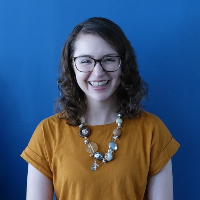Museums come in all shapes and sizes and have needs as unique as the communities that surround them. While larger institutions have the luxury of large staff sizes, steady funding, and immense infrastructure, smaller museums often collaborate with outside partners to support them and fill gaps in programming or staff knowledge. In an effort to support these smaller museums, which are often located in rural parts of the country where there is less exposure to climate change and evolution content, NCSE’s Breaking Down Barriers program launched the Museum Collaborative in 2019—an initiative to provide predominantly rural museums with free activity kits focused on evolution and climate change. The initiative marries NCSE’s content expertise with the work of institutions that are already a trusted part of the fabric of their local communities in places where evolution and climate change may be socially controversial. We connected with museums, zoos, and educational centers in Virginia, North Carolina, Tennessee, Arkansas, and California and have sent our partners five kits since the initiative’s inception.
While we have been excited to hear how NCSE’s kits engage young people in rural areas across the country, we also want to work with our collaborative partners to design curricula that meet their diverse needs. Therefore, we’ve embarked on a research project to discover how best to support rural museums and provide them with the resources they’re seeking. To do this, we’ll be exploring best practices of small museum-academic institution partnerships. The research project is a part of an entire suite of research projects by our Graduate Student Outreach Fellows (including research by Catherine Henry and Zachary Compton).
Each of us took on a focused project—I concentrated my efforts on researching partnerships pertaining to rural museums and the support that they provide to each organization involved. I began by researching rural museums, historic houses, and educational centers, and developed a database of those that met our criteria: small staff size, location in a rural area of the country, and need for an increase in science curriculum support. I conducted interviews with entities that indicated interest in being a part of our study. I transcribed the interviews, and created a series of SWOT (strengths, weaknesses, opportunities, threats) charts to analyze the results. As someone with an art background, I gravitated towards using a visual aid to categorize the data. By using this type of chart instead of traditional tools to analyze quantitative data, the information from these interviews could be analyzed quickly and shared easily with colleagues. These conversations shed light on the day-to-day actions of each entity, but they also alluded to their varying needs, limitations, and greatest assets.
Through this process, I learned that museum-academic institutional partnerships are far more complex than meets the eye. From varying grant requirements and other funding issues to differences in staff knowledge and availability, there are many aspects at play in partnership compatibility.
While every museum, zoo, and historic house is different, I was able to decipher a few emerging themes from my work. These organizations are seen as trusted centers of their communities, and provide a unique educational experience. However, their effectiveness is constrained by small staff sizes, mostly volunteer-run departments, and a heavy dependency on government funding and grants. Working with other organizations would help fill gaps not only in resources but also interpretive content and programming, particularly in the areas of evolution and climate change. Such partnerships can also provide a community space for sharing knowledge and resources, such as material libraries or access to archives.
We plan to share our findings and publish our research at the end of summer 2020.



